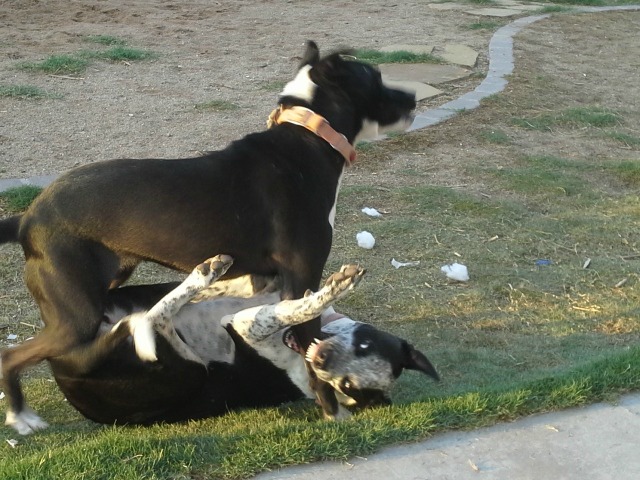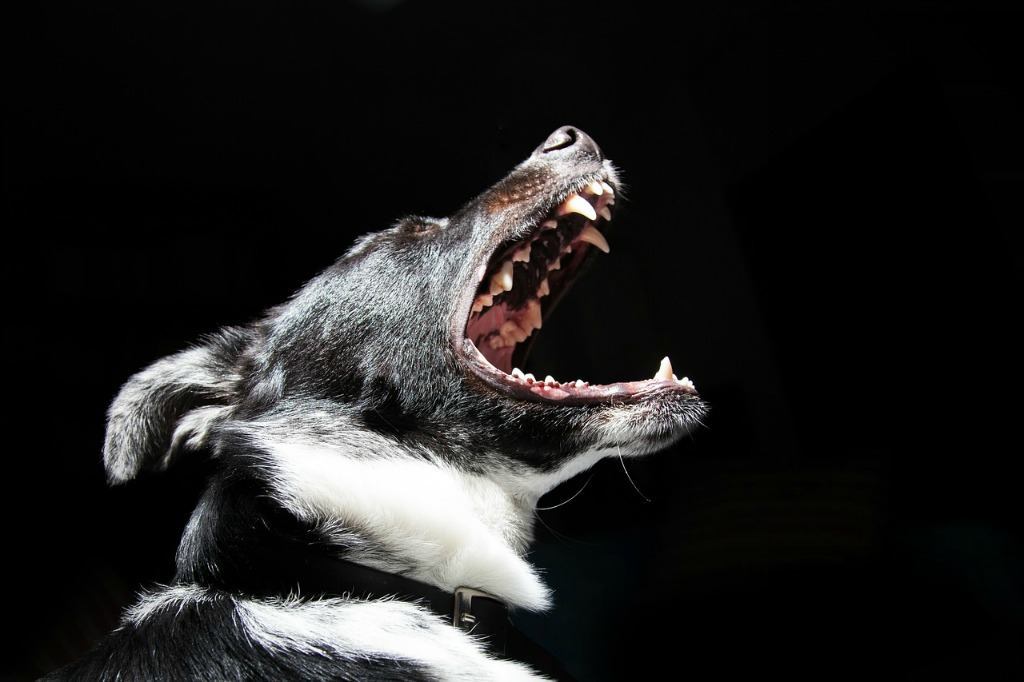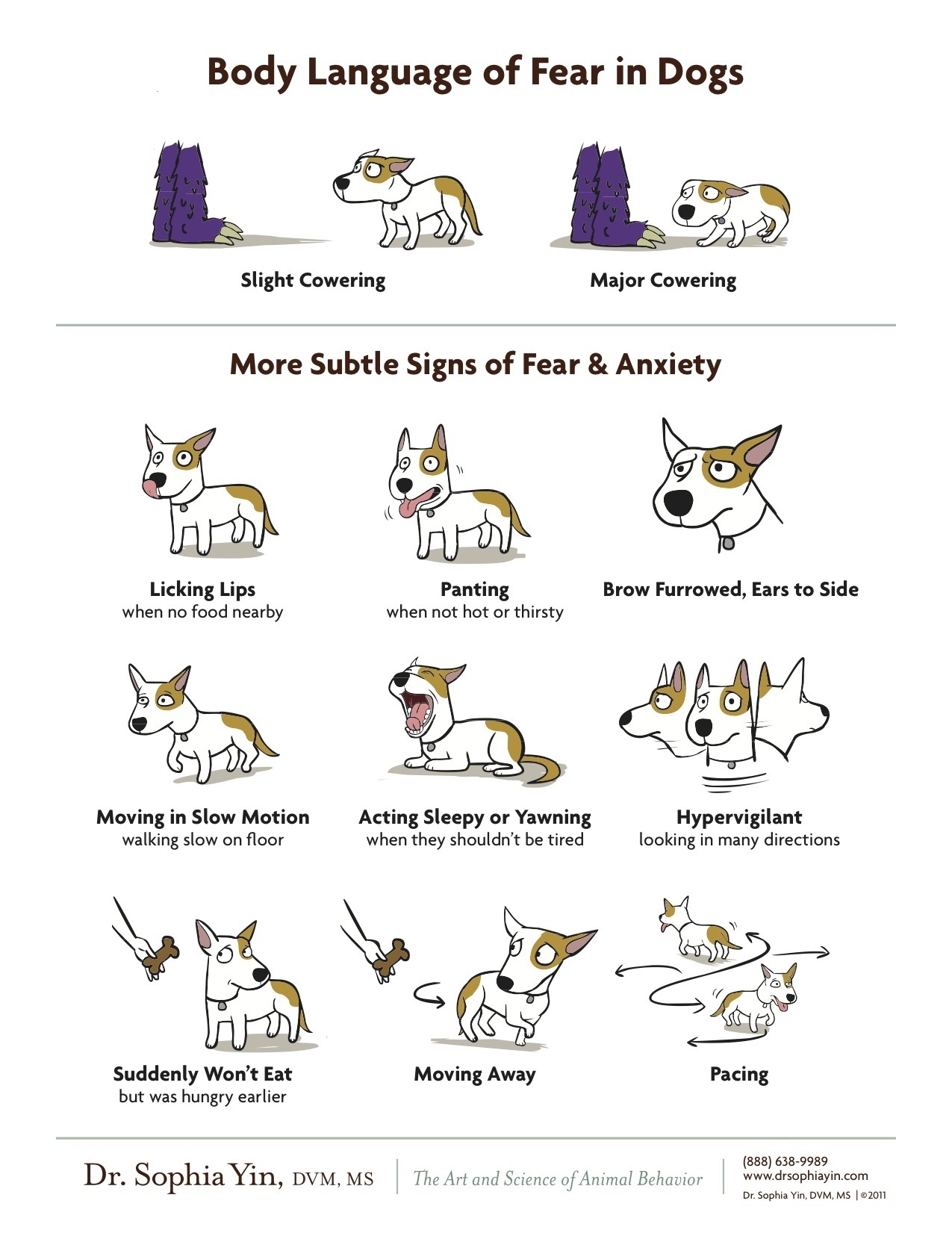
There are many reasons for aggression in animals and it’s important to understand all of them. This is a look at the most common causes of aggression in animals (particularly dogs) and what you can do to resolve the problems.
[heading style=”2″ color=”#996633″ style_color=”##996633″]Pain Aggression[/heading]
One of the most common causes of aggression in pets is a result of the animal being in pain. Dogs and cats both learn by association (see “learned aggression” below), so if you or another animal accidentally bumps your pet (particularly if your dog is arthritic or suffering from some type of physical ailment), there is every chance in the world that he will learn to associate you (or the other animal) with pain. They may begin to lash out more often, already anticipating a potential source of injury.
Animals are no more interested in suffering than we are. Before you call in a trainer, think about giving your pet up for adoption (or worse, consider euthanasia), please consult with a veterinarian. You owe it to your pets and you owe it to yourself. (Read about our experience with this in (“Training Diaries: Health Checks”)

[heading style=”2″ color=”#996633″ style_color=”##996633″]Aggression due to Medical Problems: Thyroid, Tumor, Brain Damage or Rx[/heading]
There are dozens of medical conditions that could cause a dog to become aggressive. He could be experiencing rapid mood changes due to any number of medical problems, he could have brain damage from a car accident or injury you know nothing about. He could experience convulsions that lead to seizures. A veterinarian can provide a complete picture of any health issues that may be contribution to aggression and the problem may suddenly resolve itself with a medication.
On the other hand, there is every possibility that a reaction to medication could cause a normally passive animal to suddenly become aggressive.

[heading style=”2″ color=”#996633″ style_color=”##996633″]Fear Aggression[/heading]
Fear is a major reason for aggression in pets and one of the most common reasons children are bitten. Animals have a fight or flight response. Whenever you approach or work with an animal, you should remain very cognizant of the fact that if they do not want to be petted or touched, they will usually attempt to move away from the situation. Any attempt to prevent this will be met by a “fight” response.

[heading style=”2″ color=”#996633″ style_color=”##996633″]Resource Guarding[/heading]
Most animals are quite territorial and are very likely to become aggressive when they are guarding a resource such as their food, another animal, a toy, or even you – their person. If you have a particularly “responsible” dog, you may need to be more aware of this predisposition. For example, a herding dog may grow frustrated when things are not in the order they prefer and could deliver a nip to put them back in order. (Read more about this in the article, “Herding Cats”). Most animals will guard and protect their food and toys, particularly if you have children or other animals in the house.
[heading style=”2″ color=”#996633″ style_color=”##996633″]Social Aggression[/heading]
While the concept of a “pack” has been discounted by many, we at PetsWeekly hold to the idea. Just as people are social and prefer to live in groups, so do dogs. It is a natural state for them, and as soon as we forget that dogs are pack animals, we run into problems. It’s important for us, as pet parents, to practice good leadership skills and learn how to work within the social structure of a pack. When a pack is without a leader, and every pack must have a leader. By keeping yourself in the role of leader, you will have socially aware, well-adjusted, happy animals sharing your home.
It is NEVER appropriate to scruff, shake, “alpha roll” or cause physical harm to a dog while you are asserting yourself. Good leaders are respectful and never attempt to escalate a situation. A good leader is fair to every pack member, and most importantly, they can assert themselves without even touching a member of a group. We’ll continue to talk about good leadership in future articles.
[heading style=”2″ color=”#996633″ style_color=”##996633″]Frustration Aggression[/heading]
Dogs can become just as frustrated as humans when they don’t get what they want or need. This results in aggressive movement to obtain what they need. Be sure you walk and exercise your pets, provide lots of environmental interaction (including smart toys), be sure they are properly fed and always have access to clean water, and be aware of anything that has the potential of becoming a trigger, whether it’s a toy or another animal. If a dog is easily frustrated with a ball, then provide controlled playtime. If a dog is reactive to food, then be sure you work on control with them during training.
You’ll also want to keep in mind that there levels of aggression. Push a fearful dog who has an earache too far and then add another stimulus (say, a dog walks up at the wrong time) and you’ve got an escalation issue that can set any animal into a rage.
[heading style=”2″ color=”#996633″ style_color=”##996633″]Instinctual Aggression[/heading]
If you act like prey, you will be treated like prey. That’s as simple as we can put it. While an instinct may be to run away, it’s the worse thing you can do when dealing with a dog or cat that is actively in a hunting mindset.
[heading style=”2″ color=”#996633″ style_color=”##996633″]Protective Aggression[/heading]
This most often happens when a mother protects her young pups, but it can also be seen in dogs guarding their humans. As a child, I had a dog who was attempting to protect me from a perceived threat and ended up biting a neighbor. This is sometimes a “learned” behavior and must be stopped early on to keep it from being a problem.
[heading style=”2″ color=”#996633″ style_color=”##996633″]Territorial Aggression[/heading]
Dogs and cats can both suffer from territorial aggression. Placing your hand in a cat’s favorite sleeping spot or letting your dogs attack a fence-line can lead to serious behavioral issues. Examples of territorial aggression include dogs who bark at windows or doors, lunge at people on other side of fence, or otherwise attempt to protect a space.
[heading style=”2″ color=”#996633″ style_color=”##996633″]Learned Aggression[/heading]
Dogs learn by association and once they have used a negative behavior to obtain results they want, they will begin to do it more often.
For example, Fedex arrives to leave a package. As soon as the bell rings, the dog barks and lunges at the door. The Fedex driver then leaves the package on your step and walks back to his truck.
In a dog’s mind, his barking eliminated the threat. Your dog has just learned that if he barks, the person will leave, and he will then repeat this behavior each time the doorbell rings.
The same premise holds true for other things, such as children. If a dog snaps at a child who is petting him against his will, the child will usually pull away and leave. Snapping becomes an effective method for eliminating a threat.
[bt_quote style=”big-quote” width=”0″]”In the mind of an animal, everything is ’cause’ and ‘effect’.” –Stacy Mantle[/bt_quote]
[heading style=”2″ color=”#996633″ style_color=”##996633″]Genetics[/heading]
This is a tricky topic, but it’s still a legitimate reason why a pet may bite. Certain breeds are genetically predisposed to biting due to selective breeding. Know the main characteristics of your breed but understand that any breed can be genetically bred for aggression.
I’m not talking about pit bulls. There are dozens of breeds that have been bred over the year to fight each other or a different animal. The argument comes in for nurture over nature.
[heading style=”2″ color=”#996633″ style_color=”##996633″]How to Handle an Aggressive Animal[/heading]
You should always get a full workup from a veterinarian as many causes of aggression can be resolved medically. Once you have done this, or while you are doing this, consider bringing in a trainer that deals specifically with aggression in the species of animal you are working with. If you have a cat that has suddenly become aggressive, consider bringing in a feline behaviorist. If it’s a dog that is showing signs of aggression, bring in a legitimate dog trainer that is highly recommended. Working with the wrong type of trainer or a trainer who is not specifically trained to handle aggression can often result in more problems.
Be open and honest about your situation. Avoiding it, or allowing it to become worse, will result in serious issues and can even result in a loss of life. If you have children or other animals in the home, handling an aggression issue should be first and foremost on your agenda. There are many great trainers who can help you avoid a bad situation – don’t be shy about reaching out for help.
[heading style=”2″ color=”#996633″ style_color=”##996633″]Kids and Pets[/heading]
This is another really difficult topic, but it shouldn’t be. Animals have historically been as much of a threat as they are a gift. It us up to the adults to teach children how to behave around animals. Without responsible adults teaching the younger generation, we are lost. By behaving like we expect children to behave, we teach by example. And what an awesome way for kids to learn!
This poster will let others know what your expectations are for visitors. Hang it with pride!

